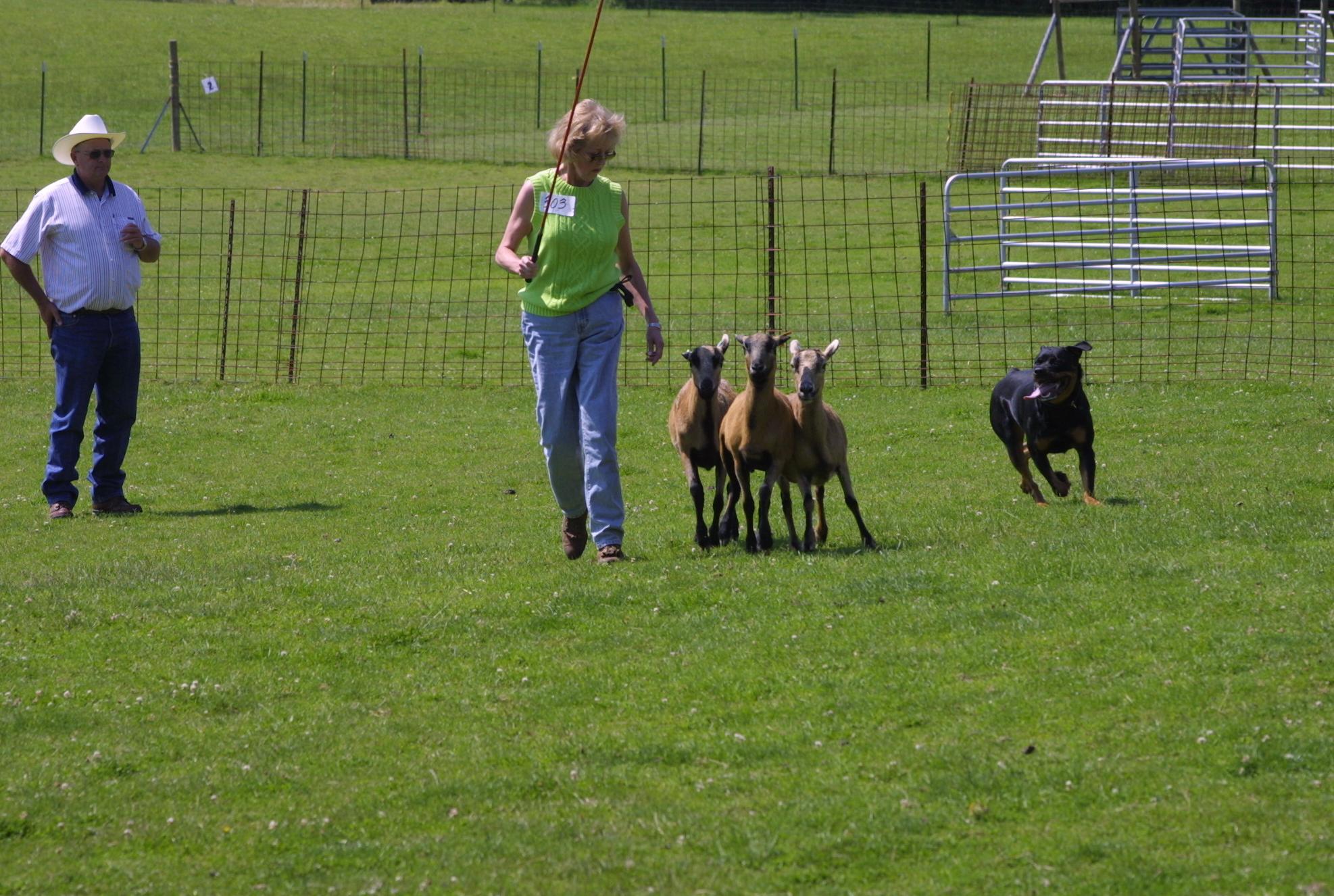Competition Training (Cont’d) Another “game” that is something I recently learned on the drop on recall exercise is to teach the drop going away from you, rather than towards you. What a concept! Everyone that does obedience knows how that drop on recall slows a dog’s recall down, correct? What if you are sending your dog to a toy, and drop him on the way to that toy? You must begin on a leash, with your dog motivated to get the toy, and you drop him, then send him. Soon, on a longer line, you get him excited for the toy, send and drop him at a half way point. The leash must be managed correctly so when you tell him to drop, you are ready with the leash. When he drops, release him. Using two toys is a concept I have recently learned, and I am still teaching this to my dogs. Dogs like to be possessive with their toys, yes? Then let’s allow them to create this desire that makes them want to work for the second toy. When they have mastered this, it creates an intensity that you have to experience to understand. The work ethic moves from have to, to want to, to intense desire to. It is fun and it is a road to travel that I have yet to fully experience, but loving the journey. This two-toy experience actually can keep the dog from mouthing a dumbbell, from chewing on the gloves, and also speeds up the retrieve! There are so many games we can play with our dogs, that I can’t even begin to scratch the surface of what we can do. So, from puppy to adult, play with your dog. Playing is what gets the connection and the intense work ethic. Playing is what keeps our dogs happy, and us young!
UNDERSTANDING YOUR PET’S BLOOD, TISSUE & URINE RESULTS By Jean Dodds DVM Blood and urine tests help determine causes of illness accurately, safely, and quickly allow us to monitor the progress of case management and medical treatments.
Hemoglobin (HGB) and mean corpuscular hemoglobin concentration (MCHC) measures the oxygen-carrying pigments of red blood cells.
COMPLETE BLOOD COUNT (CBC) A CBC gives information on hydration status, anemia, infection, the blood’s clotting ability (platelet count), and the ability of the immune system (white blood cells) to respond to a stress or other disease event. This test is important for pets with fevers, vomiting, weakness, pale gums, or loss of appetite. If your pet needs surgery, a CBC may detect a potential bleeding disorder or other unseen abnormalities.
Platelet count measures the tiny cells that help form blood clots.
White blood cell (WBC) or leukocyte This guide can help you understand count measures the body’s ability to your pet’s laboratory diagnostic test respond to stress or a variety of condiresults. Proper communication with tions. Increases or decreases indicate your veterinarian is essential regarding certain diseases or infections. interpretation of any lab results. Normal reference laboratory ranges are Granulocytes (neutrophils; PMNs), not provided here, as these may vary lymphocytes and monocytes are spedepending upon the type of instrumen- cific types of white blood cells. tation and reagents used. Each veterinary diagnostic laboratory or in-clinic Eosinophils are another specific type diagnostic test machine comes with its of white blood cell that may indicate own normal reference ranges. allergic or parasitic conditions.
Reticulocytes and nucleated red blood cells are immature red blood cells. High levels indicate a regenerative anemia.
SERUM BLOOD CHEMISTRIES These tests evaluate organ function, electrolyte status, and hormone levels. They also give barometers of adrenal function and other diseases. We use these tests for base lines as pets age, Hematocrit (HCT, PCV) measures pre-anesthetic evaluation, monitoring the percentage of red blood cells in the long term medications, as well as evalsample to detect conditions such as uating sick animals. anemia and dehydration.
WWW.COLONIALROTTCLUB.ORG | LIKE US ON FACEBOOK | FOLLOW US ON TWITTER @CRCROTTIE
13







